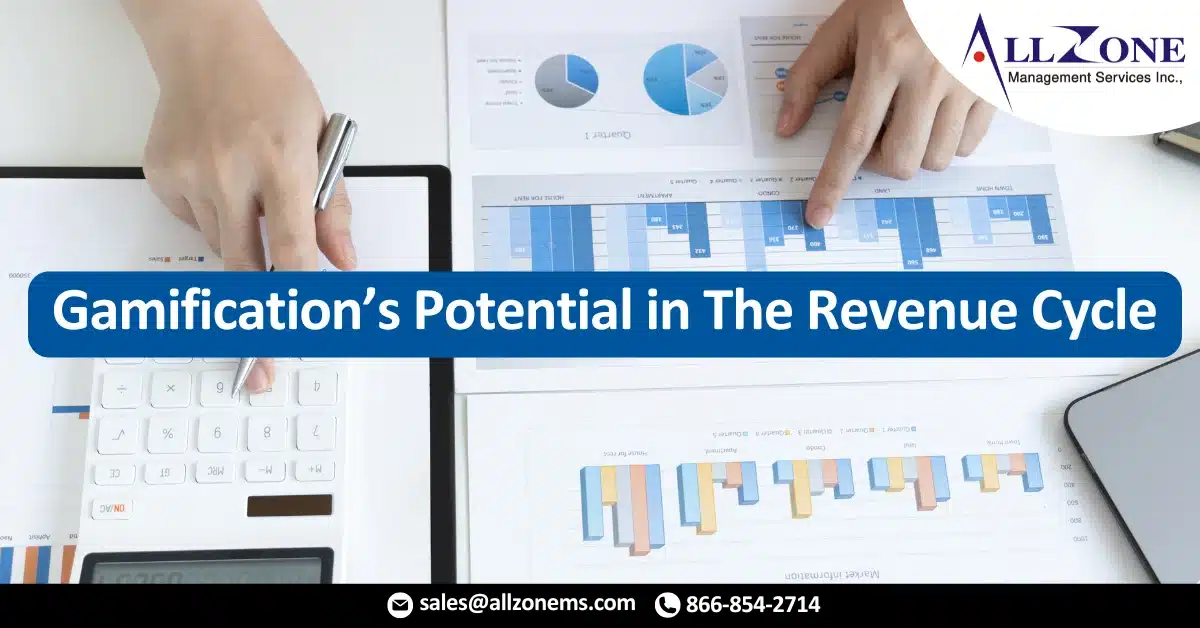According to U.S. Census Bureau data, over one third of working Americans are millennials, making them the largest generation in the American workforce. Healthcare organizations have thus turned to efforts to attract and retain millennials, who research indicates may harbor a deeper desire for real-time feedback; a sense of purpose, challenge, and enjoyment in their work; as well as a stronger willingness to seek employment elsewhere to meet these desires.
One particular effort that can be very successful in meeting these desires is gamification—the utilization of common game elements (e.g. point system, teamwork and competition, rules of play) in other areas. Gamification techniques have the potential to improve staff engagement, job satisfaction, productivity, as well as patient loyalty.
There are several key factors that consistently appear in the most effective examples of gamification:
Start Early
Gamification can be especially beneficial when it is introduced early in an employee’s career. As such, it is commonly used in training to help users to feel more engaged and knowledgeable. In one example, University of Utah Health gamified the first three days of its staff training. Day one includes a game called “Revenue Cycle and You,” which tests the staff’s knowledge of the revenue cycle steps and challenges them to indicate which areas of the revenue cycle they are impacted by and which areas they impact (with the goal of them indicating every area listed). Day two includes a dice-based game that educates staff on how their actions positively and negatively affect the rest of the revenue cycle, and both day two and three include a review of everything learned up to that point in the style of popular television game shows.
The organization has received positive feedback from staff on the use of games to help in their training and retention, with some veteran staff even reporting that they believed they would have been much more effective in the beginning of their employment had they received gamified training.
Provide Real-time/On-Demand Feedback
Gamification efforts often include a point system to make progress easy to measure, as well as summaries that allow users to better understand their overall progress. For example, Sharp HealthCare rewards billing and collections staff points for following workflow steps, which is visible to all staff through a real-time dashboard. This helps ensure staff are completing all required steps, and leaders have found also that point transparency fosters a spirit of competition—which is expected to boost productivity. Though not implemented yet, in the future, staff may also use points to earn rewards such as paid time off. Staff at Sharp HealthCare reported increased job satisfaction, and leaders are now more capable of tracking productivity, rewarding high performance, and identifying staff who may need assistance.
Establish Goals To Work Toward
The ability to show off milestones, such as through earned badges, prizes, or a leaderboard, can further help to foster a sense of accomplishment and friendly competition, and gives users goals to work towards. Along this line, it’s especially beneficial to develop and recognize small, easily-attainable tasks that contribute to a greater whole and set timers or reminders to convey the urgency of these tasks. For example, Sharp HealthCare’s gamified platform users will be able to earn badges and cosmetic items for their avatars (e.g. a cloak) to show off on their player profile, making their accomplishments more visible and celebrated, and thus even more desirable.
Expand Gamification To The Patient Experience
Gamification isn’t just for staff, however, as Union Pediatrics has demonstrated. Leaders gamified the patient experience through a loyalty program to encourage better health habits and increased engagement with the organization. Using a mobile app, patients earn points for completing clinical activities, such as attending an annual wellness exam and getting vaccinations, as well as revenue cycle activities, such as:
- Signing up for the patient portal
- Scheduling the next appointment before leaving the facility
- Bringing their insurance card to each visit
- Updating demographics when their address or name changes
- Paying an outstanding balance within 30 days
Points can then be spent to enter into a monthly raffle for prizes such as gift cards, books, a fitness tracker, or tickets to a local sporting event. As a result of this gamified loyalty program, 265% more appointments are scheduled prior to the patient leaving the office, up-to-date child wellness visits increased from 85% to 95% (well above the national standard), and costs related to reminder phone calls and letters were greatly reduced.
Gamification has proven to be a very effective means of engaging with staff and patients alike. As millennials continue to take up a significant portion of the workforce, leaders in the healthcare industry should take note of all the different ways that gamification can be utilized to increase patient engagement, staff productivity, contribute to increased staff job satisfaction, and impact the bottom line.
For More Information: https://www.healthcarebusinessinsights.com/blog/revenue-cycle/gamifications-potential-revenue-cycle/

